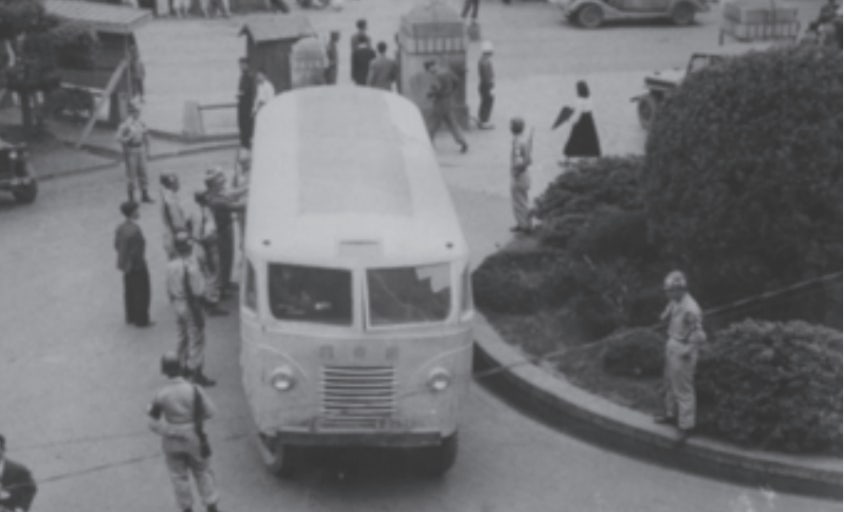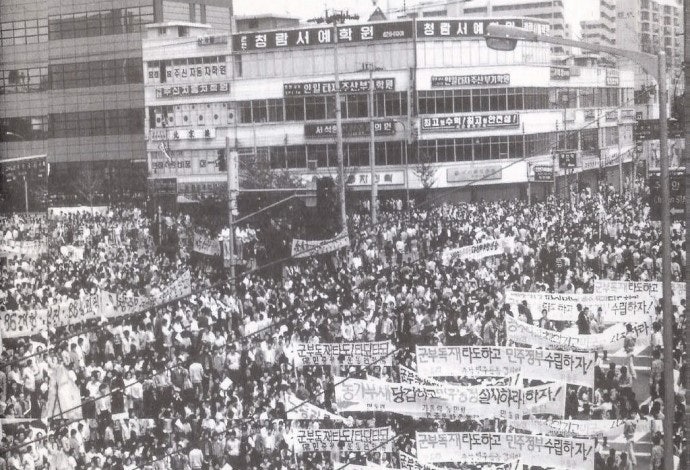The Brief Yet Intense Martial Law in South Korea
As I was winding down for the day, messages started pouring in from family and friends.
December 3, 2024, 10:30 PM: Martial Law Declared in South Korea.
“What’s happening at this hour?”
President Yoon Suk-yeol delivered an emergency live address, announcing the implementation of martial law at 11:00 PM. Videos of helicopters near the National Assembly and military vehicles in central Seoul began circulating.
Shortly after, major online platforms like Naver experienced widespread outages.
“Why can’t I access the major communities?”
“Why was martial law declared?”
Checking online news, I found that President Yoon justified martial law with the need to “eradicate pro-North forces and protect constitutional order.”
“Pro-North forces? Does this mean war with North Korea?”
“What’s going on?”
Someone shared a YouTube livestream, showing:
- Lawmakers unable to enter the National Assembly, protesting outside.
- Physical clashes between soldiers and civilians.
- Footage of military personnel breaking windows to access the National Assembly building.
- “This is serious… The National Assembly must quickly repeal martial law.”
At 1:00 AM, the National Assembly unanimously passed a resolution to repeal martial law, with all 190 lawmakers present voting in favor. Only then could I sleep.
The Aftermath of Martial Law
This brief declaration of martial law left South Korea with significant political and economic repercussions.
While the bipartisan effort to quickly repeal it was commendable, the situation caused notable disruptions:
- Currency Volatility: The KRW/USD exchange rate surged to 1,440.
- Cryptocurrency Market Crash: Domestic crypto exchanges went offline for over an hour, leading to a 40% drop in major coin values due to panic selling.
- Political Fallout: Opposition parties filed treason charges against President Yoon and key officials while initiating impeachment procedures.
Social media, particularly among younger generations, exploded with memes mocking the president. Many questioned the necessity and legitimacy of the martial law declaration. The public is still waiting for clear explanations regarding its justification.
The provided text is quite lengthy and detailed. Below is an English translation focusing on key points. If you need specific sections expanded or translated entirely, let me know.
Martial Law in South Korea’s History
What is Martial Law?
Martial law refers to the enforcement of strengthened governmental powers during a state of national emergency. It grants the military authority over administrative and security functions, limiting constitutional rights such as freedom of speech and assembly. Martial law is typically declared in cases of war, internal rebellion, or extreme national crises.
1. South Korea’s First Martial Law
1948 Yeosu-Suncheon Incident: On October 19, 1948, soldiers of the 14th Regiment in Yeosu staged a rebellion. The government declared martial law across South Jeolla Province from October 25, 1948, to February 5, 1949.

2. 1948 Jeju 4.3 Uprising
Public discontent grew following harsh crackdowns on demonstrations. On April 3, 1948, leftist armed groups attacked government facilities, prompting martial law from November 17 to December 31, 1948.

3. 1950 Korean War
On June 25, 1950, as North Korea invaded, President Syngman Rhee declared nationwide martial law, which remained in effect until the war’s end.

4. May 25, 1952, Busan Political Crisis
Martial law was declared across 23 cities and counties in Busan, South Gyeongsang Province, South Jeolla Province, and North Jeolla Province.

5. 1960 April 19 Revolution
On March 15, 1960, nationwide protests erupted in response to election fraud by the Syngman Rhee administration. On April 19, 1960, President Rhee declared martial law in Seoul. However, the protests continued, and violent crackdowns by police resulted in numerous casualties.
Ultimately, President Rhee resigned, leading to the repeal of martial law.
Martial Law Period: April 19, 1960 – April 27, 1960

6. 1961 May 16 Coup
On May 16, 1961, Park Chung-hee led a military coup, declaring martial law nationwide. It remained in place until December 17, 1963, consolidating military rule.

7. June 3, 1964, June 3 Protest
The June 3 Protest was a large-scale student movement opposing the Park Chung-hee administration’s Korea-Japan negotiations. The government suppressed the anti-agreement demonstrations with force and declared martial law at 10 PM on June 3. Martial law was lifted on July 29.

8. 1972 Yushin Constitution
President Park Chung-hee declared martial law on October 17, 1972, establishing the Yushin Constitution, which allowed him extended powers. Martial law ended on December 13, 1972.

9. 1979 Bu-Ma Democratic Protests
Democratization protests against the Yushin regime took place in Busan and Masan. On October 16, 1979, martial law was declared in both cities.

10. October 26, 1979, Assassination of President Park Chung-hee
On October 26, 1979, President Park Chung-hee was assassinated by Kim Jae-gyu, the director of the Korean Central Intelligence Agency (KCIA). Acting Prime Minister Choi Kyu-hah declared nationwide martial law the following day.
Martial Law Period: October 27, 1979 – January 24, 1981.

11. December 12, 1979, Military Coup and Martial Law
On December 12, 1979, Chun Doo-hwan and his faction within the military staged a coup, seizing control of South Korea’s military command. Amid the political chaos following President Park’s assassination, Chun’s forces dismantled the existing military structure and established their authority, extending martial law as part of their consolidation of power.

12. May 18, 1980, Gwangju Democratization Movement
On May 17, 1980, Chun Doo-hwan’s military regime expanded martial law nationwide. This led to large-scale democratization protests in Gwangju. On May 18, violent suppression began as paratroopers attacked demonstrators, turning Gwangju into a city of fear and outrage. The military indiscriminately beat and stabbed civilians, resulting in numerous deaths and injuries.

13. December 3, 2024, Martial Law under President Yoon Suk-yeol
Martial law was declared by President Yoon Suk-yeol from 11 PM on December 3, 2024, to 5 AM on December 4, 2024. This marked the 13th instance of martial law in South Korea’s modern history.
Reflection on Democracy
South Korea’s history of martial law demonstrates the sacrifices made for democracy. Citizens are now resolute in preventing any erosion of their sovereignty, holding even the highest offices accountable. The nation’s resilience ensures that authority cannot override the will of the people. 🙂

